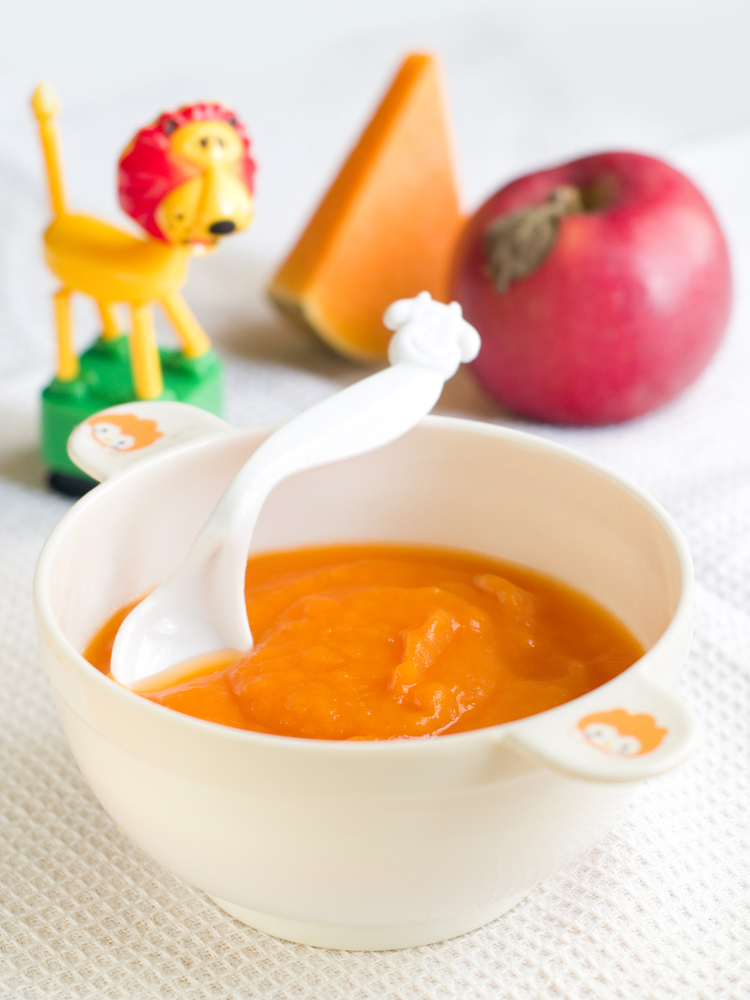Congratulation on the celebrations of your baby’s first half birthday! Well, great job mom! But now comes the most difficult part, introducing solids to your lil baby. Weaning is the procedure of slowly introducing your baby to semi-solids from breastfeeding. And believe me, it takes a lot of time, patience and love to make your baby love the new tastes of the world.
Babies love milk and slowly turning their taste towards the new bowl of smashed veggies and soup is surely a difficult task. It is one very important milestone in the life of a baby and it needs to be done rightly. By six months of age, you baby needs much more nutrition than that offered by milk alone. This is why, semi-solids of various flavors need to be slowly introduced to your little bundle of joy. But, the entire process needs to be done slowly and with a lot of care. After all you have no idea what your baby may be allergic to. So, the only way to find out about your baby’s eating habits is by starting weaning foods step-by step.
Mother’s attitude
The way you introduce weaning food to your baby is directly related to his reaction towards the food. If you don’t start weaning rightly, your baby may just become a fussy eater by the time he is a teenager. Thus, a mother’s attitude while introducing weaning food is extremely important.
As a mother, you decide only what and when your baby needs to eat. The quantity is entirely on your baby to decide. Every child has a different appetite. Some can empty bowls easily while others can easily be filled up in just 5 spoons.
Making your child eat the food forcefully makes a bad impression of food and the parent in a baby’s mind. The baby may feel his parents torturing him during meal times. As a result, they may choke, vomit and also develop a negative feeling for foods.
So, have patience and try out new tastes to your baby, seeing what he likes and dislikes.
Start with light liquids
Once your baby is six months old, introduce juices to her. Give only a few spoons of naturally sweet apple juices, orange juices, etc. which she may like. This will help your baby develop a taste to new things without any fuss.
Introduce dal water and rice water gradually and check the reaction of your baby. (Soak moong dal overnight and simply boil it in the morning. Strain the water and give it to your baby. Cook the rice in the same way and introduce the rice water to her.) If she doesn’t like it, she will surely make all sorts of funny faces and may also spit the water out of her mouth. In such a case, Stop for a while, divert her mind and again try giving the dal or rice water to her. Continue giving her the same food for 3 days, to check for any allergy or reactions. Based on your baby’s adaptability, introduce a newer taste after a few days.
Time for semi-solids
Once your baby has readily accepted the liquids, it is time to take the next step. Slowly introduce her to mashed food and semi-solids. For instance, instead of giving your baby dal water, give her a thick paste of dal. Your baby may resist initially, but will surely love it with the passing time. However, makes sure you increase the consistency gradually.
Purees and smashed food
Introduce your baby to the different tastes of various fruits and vegetables. Chop any vegetable you have at home and pressure cook it. mash it in a blender and then allow your baby to enjoy the taste of the food.
You may give your baby mashed bananas, potatoes, pumpkins, carrots, green vegetables, etc. Don’t force feed your baby. It is ok if she eats just 2 or 5 spoons of the puree. Also, make sure you strain the mashed food making sure there are no lumps to choke your little one.
When introducing new food to your baby, make sure you don’t experiment with too many items. For instance, in case you are introducing pumpkin to your baby, give her mashed pumpkin in at least 1 meals for 3 consecutive days. During this time, avoid introducing her to other new products. This will help your baby to understand the taste of pumpkin and decide if she likes it or not. Moreover, this also will help you know if your baby is allergic to certain fruits and vegetables or not.
Introducing a diet by 8th month
Now that you know what your baby likes and dislikes, start a balanced diet for your baby once she is 8 months old. Include fresh vegetables, rice, dal, and fruits in her diet. Also, give only freshly made food to your baby in order to avoid infections.
Understand and Respect your baby’s appetite
Babies, although small and without much ability to talk, they can learn to make their choices very clear by the time they are 1 year. They may like certain food items and also dislike a few others. Respect and understand their needs, without forcing food on them. Make meal time, a joy time for your kid.
Also, in case your baby doesn’t want to finish the bowl of food, don’t force it on her. She may have a small appetite and may require frequent meals instead of 3 hourly meals.
Introducing solids
Once your baby starts eating and enjoying food start giving her solids. Stop using the blender to blend the food and allow her to chew her meals with her gums and small milkies. Teach your baby how to chew. Enact to her the chewing procedure and how to swallow the food once it is properly chewed.
Non-veg food
Once your baby is almost 8 months, she may be ready to eat non-veg food. Introduce her to boiled eggs, chicken, fish and also a mixed stew for high nutrition. Give her only small amounts of these food items initially and stay alert for reactions. Gradually increase the quantity with time.
Allergy prone food
Babies can be allergic to a number of food items. However, there are higher chances of being allergic to certain items like Brinjals, couple of citrus fruits and also nuts. Avoid giving packaged and processed items as long as you can.
Also make sure you avoid using too much spices in the food. Keep the taste mild and rich. Apart from giving your baby these solid and weaning foods, give your baby enough milk supplements to make the bones stronger.
Source: Little1.in


























































Comments